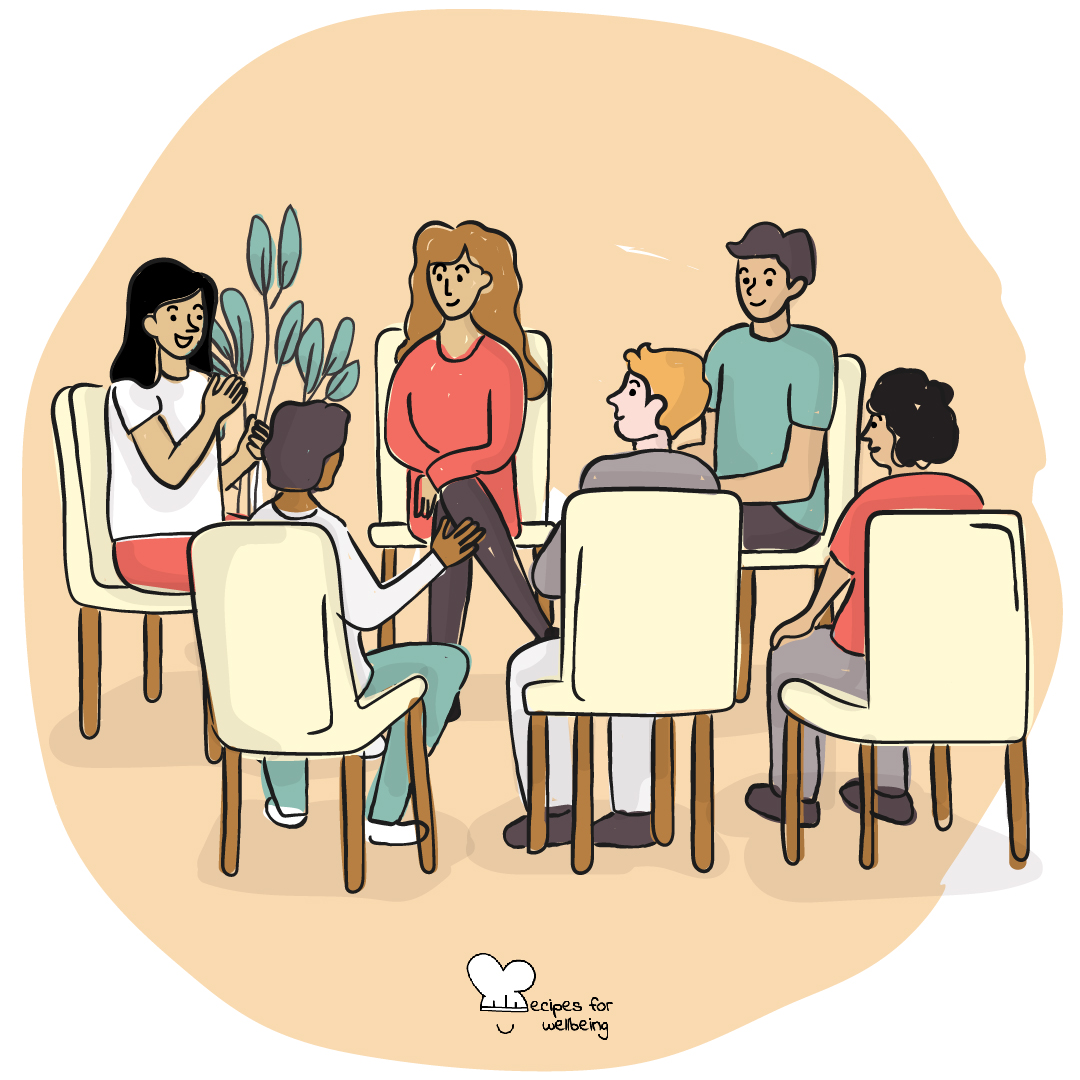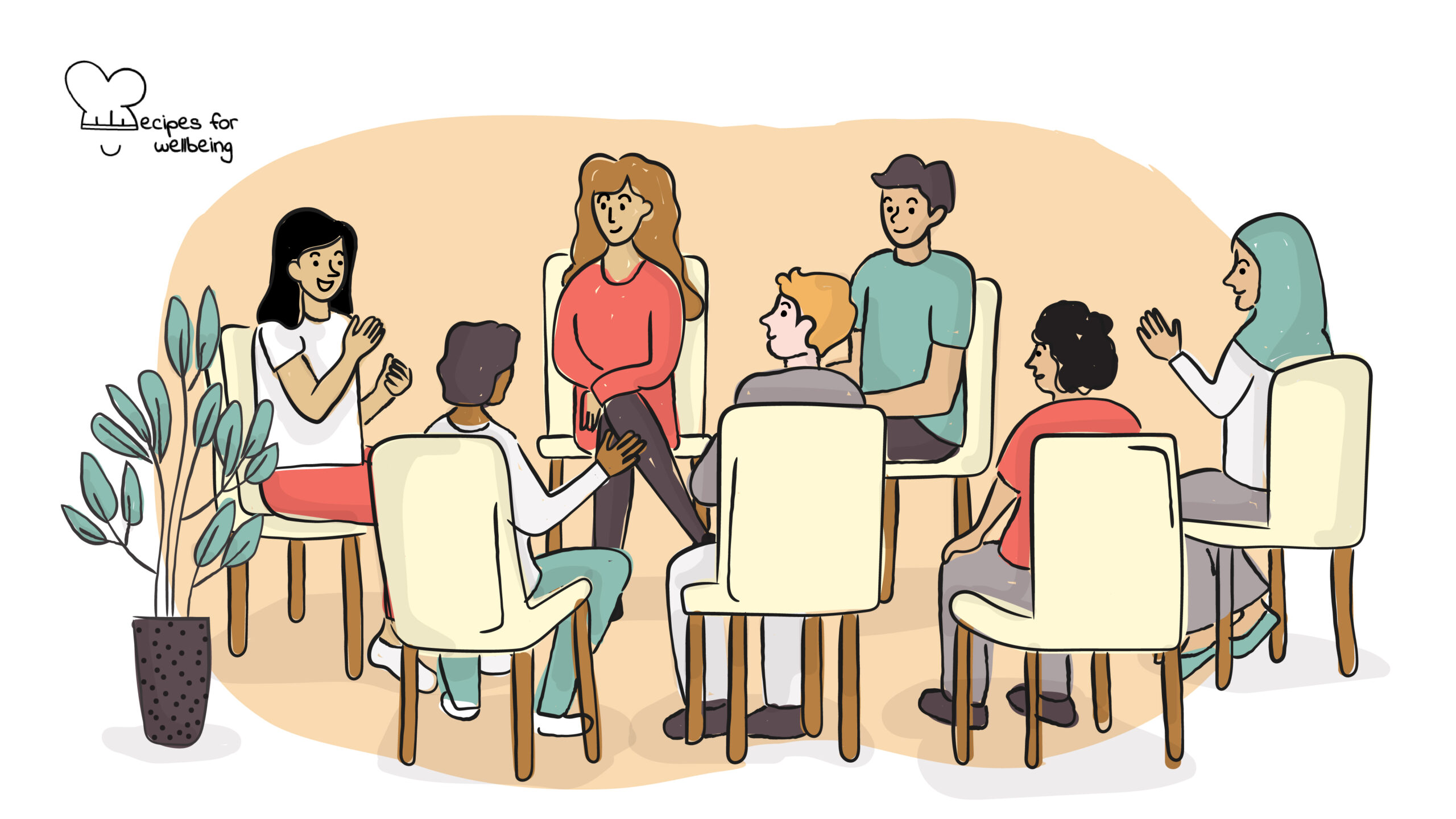
Council circle
The beauty of the Circle is that we cannot see each other’s back; and the strength of the Circle is that we can only see each other’s beauty. ―“Uncle” Angaangaq Angakkorsuaq, Eskimo-Kalaallit Elder
👥 Serves: 11-25 people, 26-40 people
🎚 Difficulty: Medium
⏳ Total time: 61-120 minutes
🥣 Ingredients: Open space, chair(s) (or cushions – as long as participants are comfortable sitting for a while), 1 talking stick
🤓 Wholebeing Domains: Community, Liberatory Learning, Radical Care
💪 Wholebeing Skills: Community-building, Diversity, Holding space, Hosting conversations, Inclusion, Liberation, Listening, Multiperspectivity, Sense-making, Trust

Council circle
📝 Description
An ancient form of meeting to listen to everyone and attend to the wellbeing of the group.
The Council Circle, or simply the Circle, is an ancient form of meeting that has been developed in many cultures and has been used for generations to gather human beings in respectful conversations. The structure of council circles may vary greatly, making them adaptable to a variety of groups, issues, and timeframes, but they all share something in common: “a group is gathered in a circle for a conversation about a specific topic, and the opportunity to speak is given one at a time to all members of the council.” (The Center for Contemplative Mind in Society)
The following activity has been adapted from the Center for Contemplative Mind in Society, which explains that “by fostering attentive listening and authentic expression, the Council Circle builds positive relationships between participants and neutralises hierarchical dynamics formed by the inequality of status, race, or other social factors. It supports a deep sense of community and fosters recognition of a shared humanity and interconnectedness. It enables individuals to give voice to their stories, develop mutual respect, cultivate a compassionate response to anger, defensiveness, and violence, as well as strengthen emotional health and resilience.”
The Ojai Foundation highlights four simple intentions that provide the basis for interaction in the Council Circle.
- “Speak from the heart” when you have the talking piece. This means to speak not only with your head and your ideas, but with your feelings as well. It means to tell your own story as honestly as you can trust in the moment. You have countless important and meaningful experiences. When you speak about them truthfully, you are speaking from the heart.
- “Listen from the heart” when another person has the talking piece. This means to listen without judgement, to listen with an open mind, even if you disagree with what the person is saying. Listen not just with your mind, but with your heart as well.
- “Speak spontaneously.” This means that we try to wait before the talking piece comes to us before we decide what we want to say. There are good reasons for this. First, if you are thinking about what you are going to say, then you are not listening completely to the person who is speaking. Second, when you don’t preplan what you are going to say, you will often be surprised what comes to you when it is your turn.
- “Speak leanly.” Something that is “lean” doesn’t have anything extra on it. When you speak, keep in mind that many others would like a chance to speak, and that there is limited time. Use only those words necessary to get your point or story across. Please remember that no one is required to speak.
👣 Steps
Step 1 – Prepare the circle
Prepare the space with chairs, cushions or other prompts to ensure your participants can be comfortable during the Council Circle.
Step 2 – Set the intention
Intention shapes the circle and determines who will come, how long the circle will meet, and what kinds of outcomes are to be expected. Additionally, the centre of a circle usually holds a focus that can be supported by placing the question in the centre or objects that represent the intention of the circle.
Step 3 – Check-in
Check-in usually starts with a volunteer and proceeds around the circle. Often, a “talking piece” is passed clockwise around the circle to identify the speaker. Members only speak when it is their turn and are encouraged to listen intently, without comment, while others are speaking. If an individual is not ready to speak, the turn is passed and another opportunity is offered after others have spoken.
To aid self-governance and bring the circle back to intention, having a circle member volunteer to take the role of guardian is helpful. This group member watches and safeguards the group’s energy and observes the group’s process.
Participants speak one-at-a-time, sharing their personal stories and experiences, rather than opinions, and listen intently while others do the same. Sharing and listening to universal stories about love, loss, fear, and hope enables participants to recognise that, despite their many differences, they have much in common.
Step 4 – Check-out
Closing the circle by checking out provides a formal end to the meeting, a chance for members to reflect on what has transpired.
Step 5 – Harvesting
If relevant, distribute any material needed for the harvesting so that the learnings from the Council Circle are fully absorbed and action (if appropriate) can be taken.

